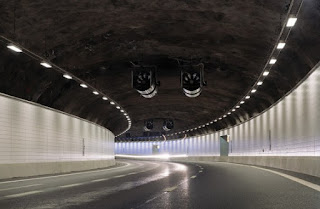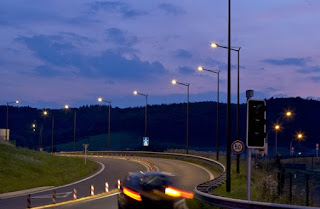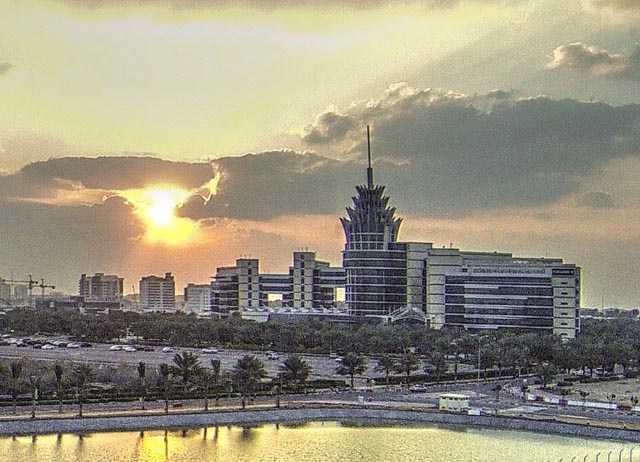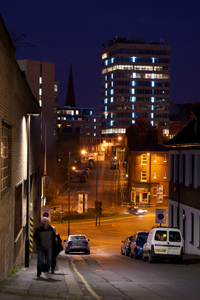TAG | led streetlights
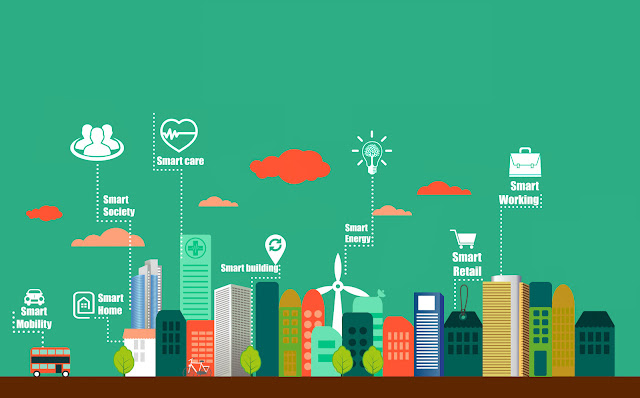
The smart city revolution shows no signs of slowing down, and the opportunities for the lighting industry are ripe for the taking. In the run up to Lux’s Lighting Fixture Design Conference, which will run from the 21 to the 22nd of February in Central London, they reveal their top five smart cites, where lighting is allowing city authorities to reimagine how our population centres are managed.
5) Los Angeles
Los Angeles is currently seeing through a plan to replace every old sodium-vapour streetlight with smart LED fixtures. The city is now 80 percent of the way through the project, which has seen the conversion of nearly 200,000 street lights. The project has saved the city over nine million dollars and has acted to reduce crime.
The existing streetlight poles are being replaced with ‘smartpoles’, which are fitted with 4G LTE wireless technology and act to improve phone reception in the tightly packed city. The smart street lights are also capable of alerting city authorities when a fixture breaks down and is need of repair and some are also able to monitor and compile analytics on traffic levels and the availability of parking places.
As we reported last year some Los Angeles street lights are able to use sensors to listen out for car crashes, reporting them to the emergency services when they occur.
Singapore is aiming to become the world’s first ‘smart nation’. Sensors and cameras are being installed to track absolutely everything from traffic to the capacity of wastepaper bins.
In Singapore lighting plays a role in the city’s incredibly smart transport network, which utilises road sensors, smart traffic lights and smart parking.
Late last year Philips Lighting announced a partnership with the Sentosa Development Corporation to develop a connected streetlight management system on Singapore’s island resort of Sentosa.
It was also recently announced that visible light communication (VLC) is being installed in the massive CapitaLand Mall to create an indoor positioning system that allows shoppers to find their favourite stores amid the mall’s labyrinth of aisles and corridors.
The authorities in Singapore have also joined forces with Scottish Li-Fi firm pureLifi, in an attempt to bring the revolutionary technology to the South-Asian city-state.
Copenhagen is already one of the world’s most sustainable and smart cities and it aims to become carbon neutral by the year 2025. Nearly half of the city’s street lights were replaced recently with LED. A number of these new fixtures form the backbone of a growing smart lighting network.
The LED streetlights brighten when vehicles approach and then dim after they pass, ensuring that roads are not continuously illuminated when it is not necessary. This is a safer option than turning off streetlights altogether in order to save money, which has been the case in the UK.
The sensor-laden light fixtures are also able to capture data and analytics and are able to help coordinate the city’s services. For example, fixtures can alert city authorities that waste bins need to be emptied.
San Francisco was arguably one of the first smart cities in the world and given its location, near Silicon Valley, this should hardly be surprising.
The city has more LEED-certified buildings than any other in the United States and a connected city initiative enables residents to locate parking places.
It was recently announced that 18,500 of San Francisco’s light-pressure sodium street light fixtures would be replaced with smart LEDs.
The new LEDs will be run via wireless smart controllers that will allow the city to remotely monitor individual light performance and adjust the intensity of the lights as required. For example, if there was a road traffic incident, the lights could be turned up.
The lights will also warn city authorities when fixtures fail or burn out, making lives better for residents, whilst saving the city money.
San Francisco’s new street lights will be powered with 100 percent clean energy, which, along with the wireless controls, will make them the greenest street lights in California.
Barcelona is renowned the world over for its smart city prowess. Boxes fitted to lampposts host finely tuned computer systems, which are able to measure traffic levels, road pollution, crowds and even the number of photographs on a particular street posted on Instagram.
Sensors fitted to streetlights and in the ground are also used to monitor the weather in Barcelona.
A few years ago the city suffered a very severe drought and came very close to running out of water altogether. As a result, smart sensors measure rainfall and analyse irrigation levels in the ground. This information is then used to modify the city’s sprinkler system to save water.
Barcelona has made the sensor it developed, Sentilo, available on the internet, meaning that city planers from around the world can study Barcelona’s smart city ventures and use the results as inspiration for their own projects.
led lighting · led streetlights · Novel Energy Lighting · smart cities · smart led streetlight · visible light communication · wireless street lights
When lighting traffic routes the primary concern is safety and comfort, especially in conflict areas where traffic may be merging, becoming compressed or changing direction or in stretches of open road where traffic speeds may be high.
To ensure safety on stretches of open road involves visibility over relatively large distances, generally 30 metres or more, to account for the high traffic speeds that may be present. To achieve this at below optimal lighting levels for our eye requires a different approach to lighting which is to light the road surface, making objects appear in silhouette against the bright surface. However where speeds can be expected to be lower and objects closer, such as in conflict areas or tunnels, this no longer works as the road surface may be visually below the object outline preventing it appearing as a silhouette, and therefore the objects themselves need to be lit as opposed to the road surface. These changing requirements are reflected in the design criteria, luminance for traffic routes and illuminance for conflict areas and tunnels.
In Europe lighting requirements for roads are given in the document EN 13201 Road Lighting. This document is in multiple parts and describes how to decide the relevant road class and then the lighting requirements that this class requires. Lighting requirements for tunnel lighting are given in document CR 14380 Lighting Applications – Tunnel Lighting. However this document is a report not a standard and should be used in conjunction with local practice.
Best practice
The luminaires should be appropriate for the local climactic conditions. For open areas the fitting should ideally be shaped and mounted to minimise windage, which is the effect of wind producing a stress on the luminaire and all mounting equipment. All brackets, columns, etc. should be rated to withstand the maximum windage that will be encountered. In enclosed spaces such as tunnels the luminaire should be capable of withstanding mechanical shock caused by possibly near-continuous vibration as well as the poor air-quality which may contain corrosive pollutants.
Positioning of luminaires should provide maximum guidance as to the geometry of the road, giving a coherent visual story to a road user. It should be ensured that some light spills behind the edges of the road to allow visibility of objects off the carriageway that may pose a hazard, however this should be controlled to prevent excessive obtrusive light.
For tunnels the lighting should provide a smooth transition between the entrance, tunnel interior and exit zones allow the eye to adjust to the different ambient light levels. All tunnel surfaces should be lit to ensure a comfortable and safe passage through the space.
For both roads and tunnels care should be taken to prevent distracting flicker caused by bright sources of light travelling in a periodic way through the field of view (the car windscreen). This can give a similar effect to a stationary light dimming and increasing in response to the electrical supply.
Taking control
The use of photocell switching to react to levels of daylight or timed on/off can ensure the correct light at the required time. Dimming of lighting at hours of low usage, such as the use of bi-power dimming which reduces the lighting during the early hours of the day, can significantly reduce energy usage. In addition a more advanced lighting control system can allow the lighting levels to be set to the requirements of a situation, such as raising the lighting levels at the scene of an accident or traffic congestion whilst allowing central monitoring of lighting to ensure peak light management with optimal maintenance.
High efficiency control gear that minimise electrical losses, especially for higher power lamps, help increase energy efficiency, whilst the use of a high quality optic to control the light helps reduce waste light that falls outside the target area.
Visit www.novelenergylighting.com today to explore our Megaman LED retrofit solutions, or call: 0208-540-8287, email: sales@novelenergylighting.com
Key Products
Road Lighting
– Isaro
– Isaro LED
Tunnel Lighting
– GTLED
led streetlights · led tunnel · Novel Energy Lighting · road lighting · thorn gtled · thorn isaro LED · thorn led · thorn lighting · tunnel lighting
11
Dubai street lights with motion sensors are internet first
Comments off · Posted by admin in LED, LED Floodlights
A series of street lights in Dubai are pioneering the way for the internet-connected future of the smart city.
In one of the first applications of its type in the world, the luminaires are fitted with motion sensors which detect traffic movements and react accordingly. If there’s no vehicles, the lights remain at 25 per cent output, but if cars approach the output is ramped up to full output.
Additional sensors can be added to the street lights – located at the Silicon Oasis in Dubai – to collect and share information and data on the surrounding environment, such as pollution and weather conditions – or even relay CCTV, advertising messages and safety warnings.
Dubai Silicon Oasis Authority worked with telecoms provider du to integrate the streetlights into an Internet of Things network, where sensors are placed in everyday objects to become ‘smart’ and interact with their surroundings.
The smart building technologies include high-tech sensors in the DSOA headquarters which use du software to allow energy and cost saving through managing the electricity consumption and allowing automatic regulation of temperature throughout the headquarters.
Engineer Muammar Khaled Al Katheeri of the DSOA told Lux Review: ‘Through these initiatives – great and small – DSOA is proud to contribute to achieving the vision of His Highness Sheikh Mohammed bin Rashid Al Maktoum, Vice President and Prime Minister of the UAE and Ruler of Dubai, of making Dubai the smartest city in the world. We have launched several smart initiatives in DSO that went through Proof of Concepts testing ahead of large scale implementation such as DSO smart waste management that proved to be very successful for reducing waste collection cost and environmental footprint.’
‘We look forward to increasing our collaboration with du on the installation of more smart street lights and smart building technologies around DSO.’
Visit www.novelenergylighting.com to explore our range of LED streetlights
ge street light · internet of things · led street lights · led streetlights · motion sensors · Novel Energy Lighting · streetlighting
25
LA unveils world’s most advanced streetlights
Comments off · Posted by admin in Uncategorized
Los Angeles’ streetlighting network boasts wireless monitoring and control and 4G connectivity to boost cellphone performance. PLUS: Why Helena Bonham Carter is more intimate with connected LED lighting than most! Lux Today Nov 17 2015 is presented by Courtney Ferguson.
led lighting · led streetlights · Novel Energy Lighting · street lights
18
Osram safeguards LED road luminaires with high overvoltage protection
Comments off · Posted by admin in LED
The power consumption benefits from LED street lighting could be compromised by the threat of voltage peaks from lightning strikes.

Lightning density in Europe differs significantly from region to region. Mandatory image source specification: © British Crown copyright 2015, the Met Office
Cities like Milan and Turin are expecting at least 50 percent less electricity consumption thanks to recent transformations to LED and Optotronic control devices from Osram. However, lightning strikes can risk the economic advantages as LED modules run with lower voltage levels and could be damaged from overvoltage. This danger has increased with the UN Climate Council identifying increasing levels of lightning worldwide in its fifth assessment report (IPCC14). Around 10 percent of the several million lightning strikes occurring each day impact on the ground, thereby causing voltage peaks. To effectively protect LED modules assembled in road luminaires, the Osram Optotronic 4DIM features overvoltage protection of 8 kilovolts as standard.
Levels of lightning density in Europe are high in summer, particularly in July and August, and with large regional differences – the U.K. Meteorological Office recorded between just 0.25 and over 20 strikes per square kilometre in 2014. In general it can also be said about distribution across Europe that lightning in the South East occurs more frequently than in the North or North West, and in towns and cities more than in rural areas
As a consequence, the new generation of Osram “Optotronic 4DIM” electronic control units feature protection of up to 8 kilovolts between mains supply and ground in protection classes I and II. This means that lightning can strike an area of up to 200 metres from a luminaire mast without the LED module being damaged.
Compared to the common 4 kilovolt overvoltage protection with control units of other manufacturers, this means that with an example mast spacing of 30 metres, twice the quantity of road luminaires survive lightning impacts without damage. In many European regions the high level of overvoltage protection with Optotronic 4DIM units is usually sufficient to provide long term protection. However in regions with high lightning density levels though, it is recommended as a precaution to implement supplementary protective measures, for example in the main distribution frames and junction boxes of road lighting systems.
Osram as the first manufacturer made this 8 kilovolt protection possible with a so-called EQUI connection (equipotential) for protection class II applications, enabling various components of the lighting system to exhibit the same electric potential, thus significantly reducing the occurrence of overvoltage on the LED module.
Optotronic control units also reliably protected from voltage peaks from two other hazardous sources: – those with up to 6 kilovolts due to load changes or switching commands in the power supply grid (often generated several dozens of times per year), and from electrostatic discharge (ESD) occurring with for example maintenance work, if no ESD protective measures exist.
Overvoltage though does not automatically mean the immediate failure of an LED module, but can cause premature ageing and therefore shorter operating periods; this has consequences for the operator in terms of costs. Normally, LED solutions have low failure rates and achieve up to 100,000 operating hours.
Novel Energy Lighting supplies all Osram LED products. Talk to us today about your requirements for LED lighting, and LED street lighting. Tel: 0208-540-8287, Email: sales@novelenergylighting.com
led lamp · led lighting · led street light · led streetlights · Novel Energy Lighting · osram · osram led · osram street lighting · street lighting
23
Japanese LED traffic lights just too cool when snow falls
Comments off · Posted by admin in LED, LED Floodlights, Uncategorized
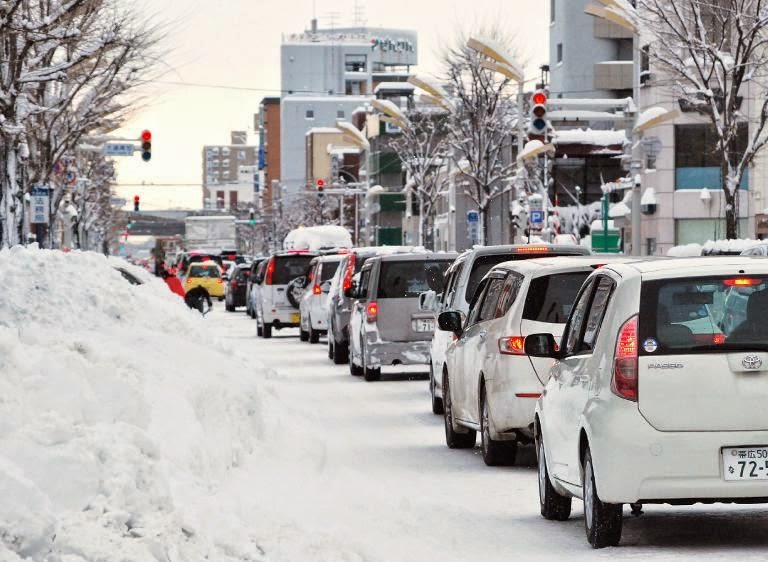 |
| AFP/Jiji Press/AFP/File – Energy saving traffic lights in Japan are failing to melt snow covering them |
energy efficient ligfhting · led city lighting · led flood lights · LED lamps · led lighting · led streetlights · led traffic lights · Novel Energy Lighting
19
How LED lighting will shape the cities of the future
Comments off · Posted by admin in LED, LED Floodlights, Uncategorized
Published on 14 Jan 2015
Hear from the experts about how advancements in LED lighting will help make our cities smarter.
These interviews were conducted at a European high-level event under the Italian EU Presidency, co-organised by the Italian Ministry of Education, University and Research (MIUR), and the European Commission DG CONNECT Photonics which was held on 29 – 30 October 2014 in Rome, Italy.
Visit us at novelenergylighting.com to explore outdoor lighting, from streetlights to floodlights to bollards to security lighting. Or call us to discuss your needs: 0208-540-8287
city lighting · energy efficient lighting · floodlights · led bollards · led floodlights · led lighting · led security lighting · led streetlights · Novel Energy Lighting · streetlights
Lux Magazine reports that The Green Investment Bank wants Britain’s streetlights to be 100 per cent LED by 2020 – and it’s putting its money where its mouth is-
Two hundred million pounds. That’s how much the Green Investment Bank reckons the UK could save every year by switching all its streetlights to LED.
In terms of carbon emissions, the impact of a nationwide LED switchover would be like taking 330,000 cars off the roads. And it would pretty much wipe out the need for the London Array offshore wind farm. So why hasn’t it happened yet?
The main reason is, predictably, money. The capital that councils need to kick off a streetlight upgrade is a major obstacle.
That’s where the Green Investment Bank comes in. Set up 18 months ago, the government-owned GIB has £3.8 billion of its own capital to play with, and is helping to attract billions more in private investment to support projects. So far it has committed a total of £1.3 billion to 27 projects covering energy efficiency as well as waste, bioenergy and wind power, with private money increasing the figure to £4.6 billion.
Now the GIB has set its sights on the UK’s seven million streetlights – many of which are over 40 years old. Its new Green Loan service aims to remove the upfront capital cost of an LED upgrade, with councils repaying the money from the savings they make on their electricity bills.
‘Although the technology is proven and the savings are fairly well understood, you need capital to do this,’ said Gregor Paterson-Jones, in charge of energy efficiency at the GIB. ‘When we’ve been out talking to people, they’ve said, we understand this, we’d like to do it, but we just don’t have the budget.
‘Over the past five years we have data to prove that energy savings can be met, and manufacturers are able to give warranties for a long period of time for the performance of those lights. So the complex structures where you transfer risk are not necessarily required, which keeps the cost of financing down.’
As for who supplies the lights and the products that are used, the GIB will leave that up to each local authority.
The GIB’s Green Loan isn’t the first scheme of its kind – the Carbon Trust and the Green Deal have offered similar schemes based on repaying loans from reduced bills, and a number of lighting suppliers have come up with financing packages too. But it’s the first one in the UK aimed particularly at street lighting, and the bank has access to huge amounts of money.
Currently less than 10 per cent of Britain’s streetlights are LED – but there’s no reason we can’t aim to make that 100 per cent by 2020, Paterson-Jones says.
Local authority street lighting managers were recently invited to join MPs at a meeting of the All-Party Parliamentary Lighting Group, to hear about what the bank has to offer.
The first council to benefit from GIB funding for streetlights is Glasgow, which is about to embark on the second phase of a major upgrade as part of its Future Cities programme.
One thousand of Glasgow’s streetlights were upgraded to LED in a pilot project in 2012, and the next phase of the project will target 10,000 more. Over 18 years, the city believes it will make a net saving of more than £8 million from the upgrade.
Brian Devlin, who is in charge of environmental services at Glasgow City Council, said he was ‘delighted’ to be the first local authority to get Green Investment Bank backing. ‘If I’m asked to make a saving, I want to make a saving around supply chain and energy rather than going and reducing schools, social work, front-line service,’ he said.
Joan Walley MP, who co-chairs the All-Party Parliamentary Lighting Group, praised the Glasgow project and called the GIB’s Green Loan a ‘game-changer’. ‘We want to make sure as many local councils as possible can do all they can to access that funding, because when trying to improve street lighting, it always, always, always comes down to finance.’
John Jeffrey of Cheshire West and Chester Council agreed: ‘Finance is the number one obstacle. When your revenue pot shrinks, that makes it more difficult to maintain your borrowing limits and street lighting is not seen as a priority for investment. The Green Investment Bank might unlock that door,’ he said.
Novel Energy Lighting is the first choice in LED products. We offer top quality LED lamps, bulbs, and downlights with affordable prices. Most of our LED products come with a five year warranty and 30 day satisfaction guarantee. These lamps and bulbs have a longer lifespan up to 50,000 hours rated lifetime as compared to traditional lamps and bulbs. Save up to 90% energy with our products. For efficient and better lighting output, our LED products are the best.
led lighting · LED lights · led streetlights · retail led lights
SHEFFIELD:
In three years’ time, Sheffield will no longer be visible from the peak district at night.
The city is replacing all its 68,000 streetlights with white LED lamps, reducing light pollution while aiming to cut energy consumption by 40 per cent. The LED streetlights are remotely controlled by a system that detects lamps in need of repair and alerts maintenance staff, and the lamps can be dimmed or brightened street by street or even lamp by lamp.
According to the city council, the project, which started in 2012, will take five years to complete
LINCOLNSHIRE:
North East Lincolnshire Council is hoping to complete two tasks at once: improving street safety while saving energy with LED streetlights. Over the next two
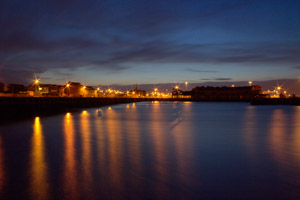
years, 16,500 orange sodium streetlights will be replaced with white LEDs.
The council has invested £8.2 million in the project, and expects the new light sources to have operating lives of 104,000 hours, compared with 18,000 for the
Jason Longhurst, head of development services at the council, says: ‘Lower running costs means we will limit the impact of rising energy costs that we are all seeing. But there are also wider social benefits, such as making the area more attractive and making people feel safer.’old lamps.
energy reduction · led lighting · led streetlights · Novel Energy Lighting


